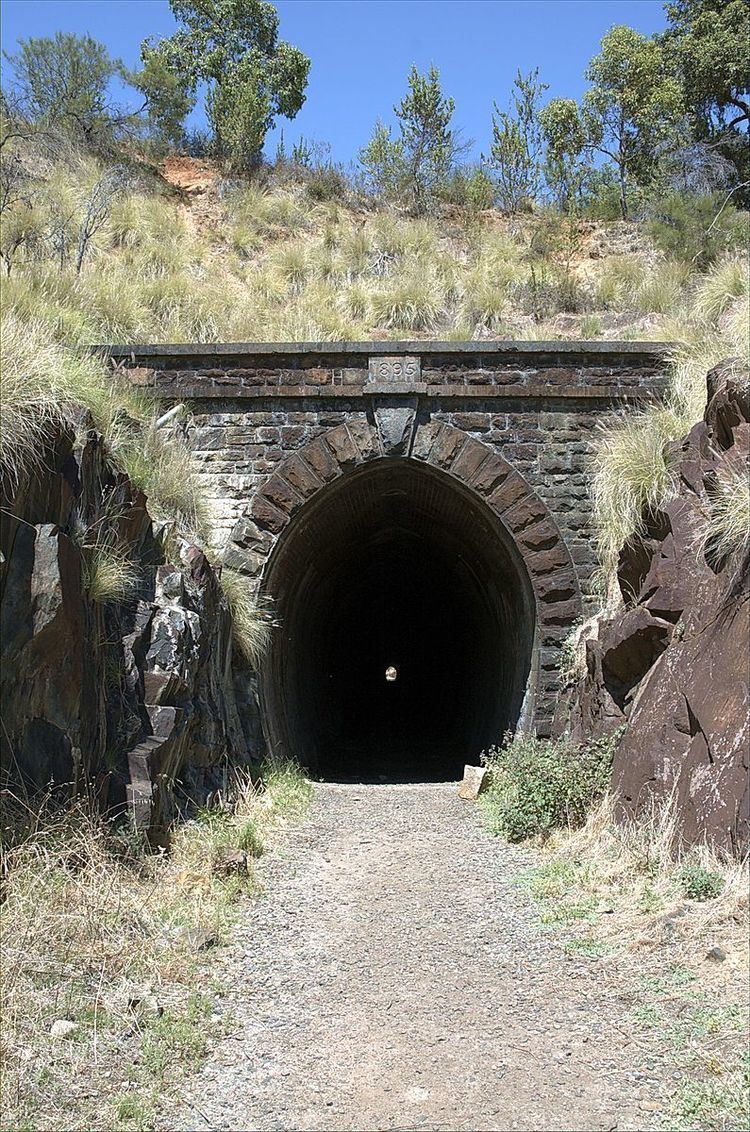Closed 13 February 1966 Opened 1895 | No. of tracks 1 Line length 340 m | |
 | ||
Owner Department of Parks & Wildlife Hours Open today · Open 24 hoursSundayOpen 24 hoursMondayOpen 24 hoursTuesdayOpen 24 hoursWednesdayOpen 24 hoursThursdayOpen 24 hoursFridayOpen 24 hoursSaturdayOpen 24 hoursSuggest an edit Similar John Forrest National, Swan View railway station, Greenmount National Park, Lake Leschenaultia, Mundy Regional Park | ||
Was this a sign of things to come swan view tunnel perth western australia
The Swan View Tunnel is a former railway tunnel located on the southern side of the Jane Brook valley in the outer Perth suburb of Swan View in the John Forrest National Park on the edge of the Darling Scarp. After its closure as a railway tunnel, it reopened as part of a rail trail.
Contents
- Was this a sign of things to come swan view tunnel perth western australia
- Construction
- Deviation
- Railway closure
- References
Prior to the construction of tunnels and the sinking of the Subiaco railway station in 1999, the Swan View Tunnel was the only tunnel on the Western Australian railway network.
Construction
Swan View Tunnel was built on an alignment which replaced the original Eastern Railway passing through Smiths Mill, (now Glen Forrest), and Mundaring. The project to build the new line, including the Swan View Tunnel, was managed by the Engineer-in-Chief of the Western Australian Government Railways, C Y O'Connor. Work began in 1894, with the two bores meeting on 18 April 1895. The tunnel opened on 22 February 1896. The unstable nature of the jointed granite, along with clay seams, caused difficulties during construction of the tunnel. A masonry-lined face prevented rock falls, but reduced the inner diameter.
The tunnel's small diameter combined with the steep gradient (1:49) to cause smoke accumulation. Incidents involving near-asphyxiation of train crews started in 1896, and continued throughout the tunnel's operating life. The first serious incident of this nature was in 1903.
The tunnel was 13 chains (858 ft, 262m) long.
The tunnel's design was incompatible with the ASG class Garratt steam locomotives used by the Western Australian Government Railways in the 1940s. The worst accident in the tunnel was on 5 November 1942, when both drivers and firemen were asphyxiated by carbon monoxide, one driver dying, when a fully laden double-header train passed through the tunnel at walking pace.
Deviation
Between 1934 and 1945, a signal cabin was located at Tunnel Junction, on the eastern end of the tunnel, for managing the transition from the tunnel's single line to the dual lines of the system.
The single line tunnel was considered unsafe for eastbound (climbing) trains, and a diversion was added on the northern side of the hill that the tunnel passed through.
It was known as the deviation, and due to rock instability included a fence of 16 wires to be used as a detector of rock falls. The diversion was completed on 25 November 1945.
Railway closure
The railway line through the tunnel was lifted after the closing of the older and steeper Eastern Railway and the opening of the Avon Valley diversion that opened in February 1966.
After the 1960s, gates/doors were put at either end of the tunnel though these were later removed.
The tunnel remains intact and has reopened as part of the John Forrest Heritage Trail, part of the larger Railway Reserve Heritage Trail. During the 1990s, the government authority in which the tunnel land was vested, the Department of Environment & Conservation allowed a number of night time 'Ghost walks' in the tunnel as part of the Hills Forest programmes.
